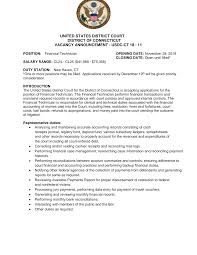
Double entry accounting describes a system in that transactions are recorded in two different ways. Both the accounting equation and traditional approaches use two aspects of transactions: the real account debits that go out and the personal credit that is given. Debits and credits are both recorded in separate books. These are the major concepts of double entry accounting. Hopefully, you'll understand its basic concepts.
Credits and debits
Double entry accounting for credit and debits has two major categories: the debit and the credits. Credits and debits are posted in the right column. The debit is always higher than the credit. Credits are usually lower than debits. The amount of the credit is then equal to the debit. The account balance will be equal if the credit and debit are equal.

Daybooks
Daybooks are crucial documents in a double entry accounting system. Each transaction is kept in at least two ledgers. A debit is taken to the customer ledger and a credit to the general ledger. Business can keep track of its finances using the information contained in daybooks. Daybooks should not be used as a replacement for a nominal leger. Before you make the switch to double-entry, it is important that your company considers its needs and objectives.
Nominal ledger
When a business conducts transactions, they are recorded under the name of an account and the date of the transaction. There may be different journals that a business keeps for different purposes. One example is a special journal for cash transactions. These journals keep track of specific transactions and are usually not included in the general journal. These journals are then combined into the nominal journal. This document contains all transactions during the period and serves as the basis of financial statements regarding cash flow.
Balance sheet
A double-entry balance sheet includes three components: assets and liabilities. Equity is the third component. Assets are items such as cash, machinery, or buildings that a business owns. Liabilities refer to what the business owes others. Equity represents the owners' stake in the business, such as their contributions or their share of the profits. It is important to understand the impact of each element on the balance sheet when using this accounting system.

Generally accepted accounting principles
In financial accounting, the important concept of double-entry is important. It ensures that assets and liabilities are equal, and that the total of these two amounts will always be in balance. Double-entry is a popular practice that is preferred by investors and banks. Double-entry bookkeeping is also a flexible system that allows for customized adjustments. The following are the principles of double enter bookkeeping.
FAQ
What is a Certified Public Accountant and how do they work?
A certified public accountant (C.P.A.) is a person with specialized knowledge in accounting. He/she knows how to prepare tax returns and assist businesses in making sound business decisions.
He/She also monitors the cash flow of the company and ensures that it runs smoothly.
What does it mean to reconcile accounts?
Reconciliation involves comparing two sets of numbers. One set is called "source" and the other the "reconciled."
Source consists of actual figures. The reconciled is the figure that should have been used.
For example, if someone owes you $100, but you only receive $50, you would reconcile this by subtracting $50 from $100.
This ensures that the accounting system is error-free.
What is an auditor?
An audit is a review or examination of financial statements. To ensure everything is correct, an auditor reviews the company's financial statements.
Auditors look for discrepancies between what was reported and what actually happened.
They also examine whether financial statements for the company have been properly prepared.
Statistics
- Employment of accountants and auditors is projected to grow four percent through 2029, according to the BLS—a rate of growth that is about average for all occupations nationwide.1 (rasmussen.edu)
- The U.S. Bureau of Labor Statistics (BLS) projects an additional 96,000 positions for accountants and auditors between 2020 and 2030, representing job growth of 7%. (onlinemasters.ohio.edu)
- According to the BLS, accounting and auditing professionals reported a 2020 median annual salary of $73,560, which is nearly double that of the national average earnings for all workers.1 (rasmussen.edu)
- a little over 40% of accountants have earned a bachelor's degree. (yourfreecareertest.com)
- a little over 40% of accountants have earned a bachelor's degree. (yourfreecareertest.com)
External Links
How To
How to Get an Accounting Degree
Accounting is the art of keeping track and recording financial transactions. It records transactions made by individuals, governments, and businesses. Accounting refers to bookkeeping records. To help businesses and organizations make informed decisions, accountants prepare reports using these data.
There are two types if accountancy: general (or corporate), and managerial. General accounting involves the reporting and measurement business performance. Management accounting focuses primarily on the measurement, analysis, and management of resources.
Accounting bachelor's degrees prepare students to become entry-level accountants. Graduates may also choose to specialize in areas like auditing, taxation, finance, management, etc.
Students who want to pursue a career in accounting should have a good understanding of basic economics concepts such as supply and demand, cost-benefit analysis, marginal utility theory, consumer behavior, price elasticity of demand, and the law of one price. They should be able to comprehend macroeconomics, microeconomics as well as accounting principles.
A Master's Degree in Accounting is only available to students who have completed at least six semesters in college courses in Microeconomic Theory, Macroeconomic Theory, International Trade; Business Economics; Finance Principles & Procedures. Cost Analysis; Taxation; Human Resource Management; Finance & Banking. Statistics; Mathematics; Computer Applications. English Language Skills. Graduate Level Examinations must also be passed. This exam is typically taken at the end of three years' worth of study.
For certification as public accountants, candidates must have completed four years of undergraduate and four year of postgraduate education. The candidates must pass additional exams before being eligible to apply for registration.